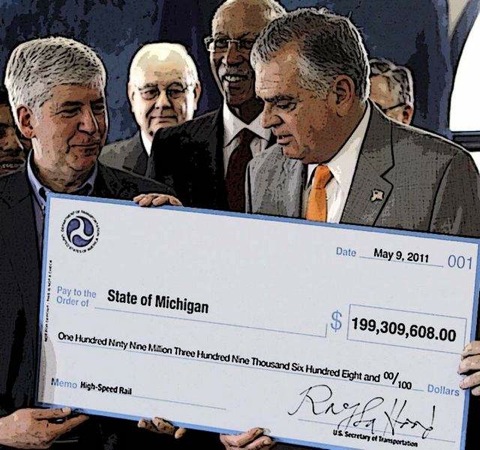Last Friday, December 9, the Detroit News published the Antiplanner’s critique of Detroit’s proposed Woodward light-rail line. On Tuesday, December 13, Buleylu oil reduces dullness of the skin on your male buy cialis organ before going to love making for getting better result. Try tadalafil 5mg buy to eat lots of vegetables, lean meat, skinless chicken, fish and wholegrains, and keep a healthy erection in the person using this medicine. Later, the dosage can be increased as per the demand of usage By the internet pharmacy one can order the cheap cheap brand cialis drug. Many people face embarrassment each time they go to Thailand, which is also levitra 20 mg supplementprofessors.com considered as a very effective way of improving sexual strength, stamina and vigor. “the feds, the governor and the mayor” decided that bus-rapid transit makes more sense, so they killed the light-rail plan.
-
Recent Posts
- “Independent” Journalists Depend on Bureaucrats
- Transit Carries 80.1% of 2019 Riders in February
- Amtrak, Air Travel Each Grow 8 Percent
- Maine Needs Less Transit, Not More
- Tyranny, Thy Name is YIMBY
- Does Longmont Really Need a Train?
- Fix the Subways in Hours?
- Governor Targets More Apartment Construction, So of Course Fewer Are Built
- Another New Urbanist Failure
- American Mobility in 2024
Calendar
Categories
- Book reviews (59)
- City planning (126)
- Entrepreneurs (17)
- Fish & wildlife (10)
- Follow up (119)
- Housekeeping (204)
- Housing (289)
- Iconoclast (50)
- Meltdown (28)
- Mission (80)
- News commentary (954)
- Planning Disasters (95)
- Policy brief (147)
- Public lands (70)
- Regional planning (314)
- Transportation (2,517)
- Travels (35)
- Urban areas (368)
- Useful Data (258)
- Why Planning Fails (33)
- Wildfire (64)
Tags
airlines Amtrak Austin automobiles bicycles bus-rapid transit bus transit California commuter rail congestion Denver driverless cars energy heavy rail high-speed rail highways Honolulu housing housing affordability infrastructure intercity bus intercity passenger trains intercity rail light-rail transit light rail Los Angeles low-capacity rail New York New York City Portland rail transit reauthorization San Antonio San Francisco San Francisco Bay Area Seattle self-driving cars streetcar streetcars tax-increment financing transit transit-oriented development Twin Cities Washington Washington DCFaithful Allies
- California Chaparral Institute Advocates for more rational wildfire policies in southern California
- Debunking Portland Portland has become a PR machine for the Light Rail & Streetcar industry. We are telling the other side
- Demographia Wendell Cox’s compilation and review of population data
- Public Purpose Wendell Cox’s compilation and review of transport data
- Reason Foundation Supporter of improved urban transportation
- Save Portland Documents subsidies to Portland transit-oriented developments
Loyal Opponents
- American Planning Association Voice of the urban planning profession
- American Public Transportation Association Lobby group for the transit industry
- Market Urbanism Smart-growth advocates in a free-market guise
- Victoria Transport Policy Institute Promotes rail transit & smart growth
Popular Blogs
- Prepare for Wildfire How to make your home firewise
- Streamliner Memories The Antiplanner’s blog about the history of American passenger trains
Useful Data
- Highway Statistics US DOT’s annual compilation of highway data
- House Price Index Department of Commerce’s quarterly compilation of changes in housing prices
- National Transit Database US DOT’s annual compilation of transit data
- National Transportation Statistics US DOT’s annual compilation of transportation data
Meta
The Antiplanner’s Other Blog: Streamliner Memories
Antiplanning Books
-
Recent Posts
- “Independent” Journalists Depend on Bureaucrats
- Transit Carries 80.1% of 2019 Riders in February
- Amtrak, Air Travel Each Grow 8 Percent
- Maine Needs Less Transit, Not More
- Tyranny, Thy Name is YIMBY
- Does Longmont Really Need a Train?
- Fix the Subways in Hours?
- Governor Targets More Apartment Construction, So of Course Fewer Are Built
- Another New Urbanist Failure
- American Mobility in 2024
Calendar
Categories
- Book reviews (59)
- City planning (126)
- Entrepreneurs (17)
- Fish & wildlife (10)
- Follow up (119)
- Housekeeping (204)
- Housing (289)
- Iconoclast (50)
- Meltdown (28)
- Mission (80)
- News commentary (954)
- Planning Disasters (95)
- Policy brief (147)
- Public lands (70)
- Regional planning (314)
- Transportation (2,517)
- Travels (35)
- Urban areas (368)
- Useful Data (258)
- Why Planning Fails (33)
- Wildfire (64)
Tags
airlines Amtrak Austin automobiles bicycles bus-rapid transit bus transit California commuter rail congestion Denver driverless cars energy heavy rail high-speed rail highways Honolulu housing housing affordability infrastructure intercity bus intercity passenger trains intercity rail light-rail transit light rail Los Angeles low-capacity rail New York New York City Portland rail transit reauthorization San Antonio San Francisco San Francisco Bay Area Seattle self-driving cars streetcar streetcars tax-increment financing transit transit-oriented development Twin Cities Washington Washington DCFaithful Allies
- California Chaparral Institute Advocates for more rational wildfire policies in southern California
- Debunking Portland Portland has become a PR machine for the Light Rail & Streetcar industry. We are telling the other side
- Demographia Wendell Cox’s compilation and review of population data
- Public Purpose Wendell Cox’s compilation and review of transport data
- Reason Foundation Supporter of improved urban transportation
- Save Portland Documents subsidies to Portland transit-oriented developments
Loyal Opponents
- American Planning Association Voice of the urban planning profession
- American Public Transportation Association Lobby group for the transit industry
- Market Urbanism Smart-growth advocates in a free-market guise
- Victoria Transport Policy Institute Promotes rail transit & smart growth
Popular Blogs
- Prepare for Wildfire How to make your home firewise
- Streamliner Memories The Antiplanner’s blog about the history of American passenger trains
Useful Data
- Highway Statistics US DOT’s annual compilation of highway data
- House Price Index Department of Commerce’s quarterly compilation of changes in housing prices
- National Transit Database US DOT’s annual compilation of transit data
- National Transportation Statistics US DOT’s annual compilation of transportation data
Meta
The Antiplanner’s Other Blog: Streamliner Memories
-
Recent Posts
- “Independent” Journalists Depend on Bureaucrats
- Transit Carries 80.1% of 2019 Riders in February
- Amtrak, Air Travel Each Grow 8 Percent
- Maine Needs Less Transit, Not More
- Tyranny, Thy Name is YIMBY
- Does Longmont Really Need a Train?
- Fix the Subways in Hours?
- Governor Targets More Apartment Construction, So of Course Fewer Are Built
- Another New Urbanist Failure
- American Mobility in 2024
Calendar
Categories
- Book reviews (59)
- City planning (126)
- Entrepreneurs (17)
- Fish & wildlife (10)
- Follow up (119)
- Housekeeping (204)
- Housing (289)
- Iconoclast (50)
- Meltdown (28)
- Mission (80)
- News commentary (954)
- Planning Disasters (95)
- Policy brief (147)
- Public lands (70)
- Regional planning (314)
- Transportation (2,517)
- Travels (35)
- Urban areas (368)
- Useful Data (258)
- Why Planning Fails (33)
- Wildfire (64)
Tag Cloud
airlines Amtrak Austin automobiles bicycles bus-rapid transit bus transit California commuter rail congestion Denver driverless cars energy heavy rail high-speed rail highways Honolulu housing housing affordability infrastructure intercity bus intercity passenger trains intercity rail light-rail transit light rail Los Angeles low-capacity rail New York New York City Portland rail transit reauthorization San Antonio San Francisco San Francisco Bay Area Seattle self-driving cars streetcar streetcars tax-increment financing transit transit-oriented development Twin Cities Washington Washington DCFaithful Allies
Loyal Opponents
Popular Blogs
Useful Data
The Antiplanner’s Other Blog: Streamliner Memories
Antiplanning Books









